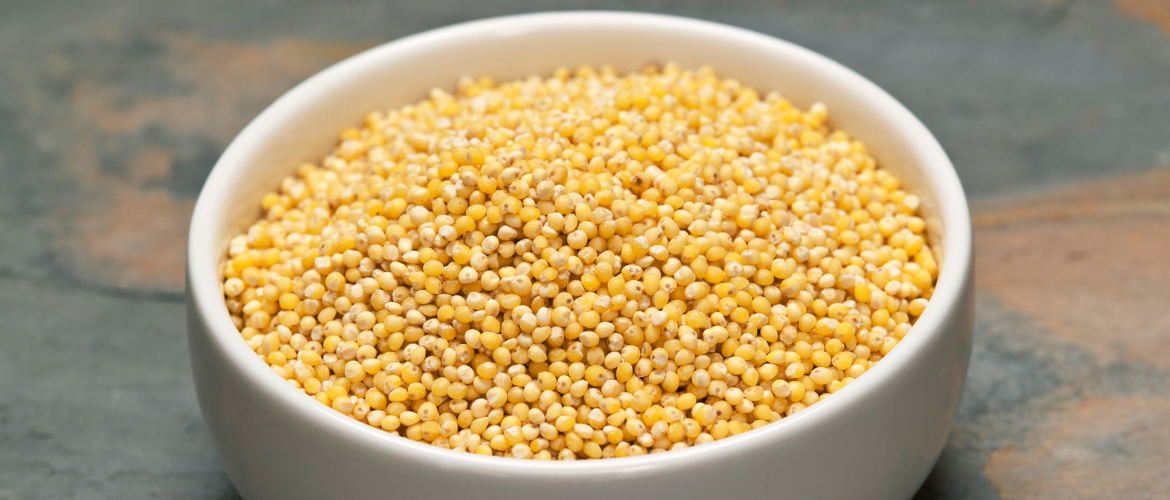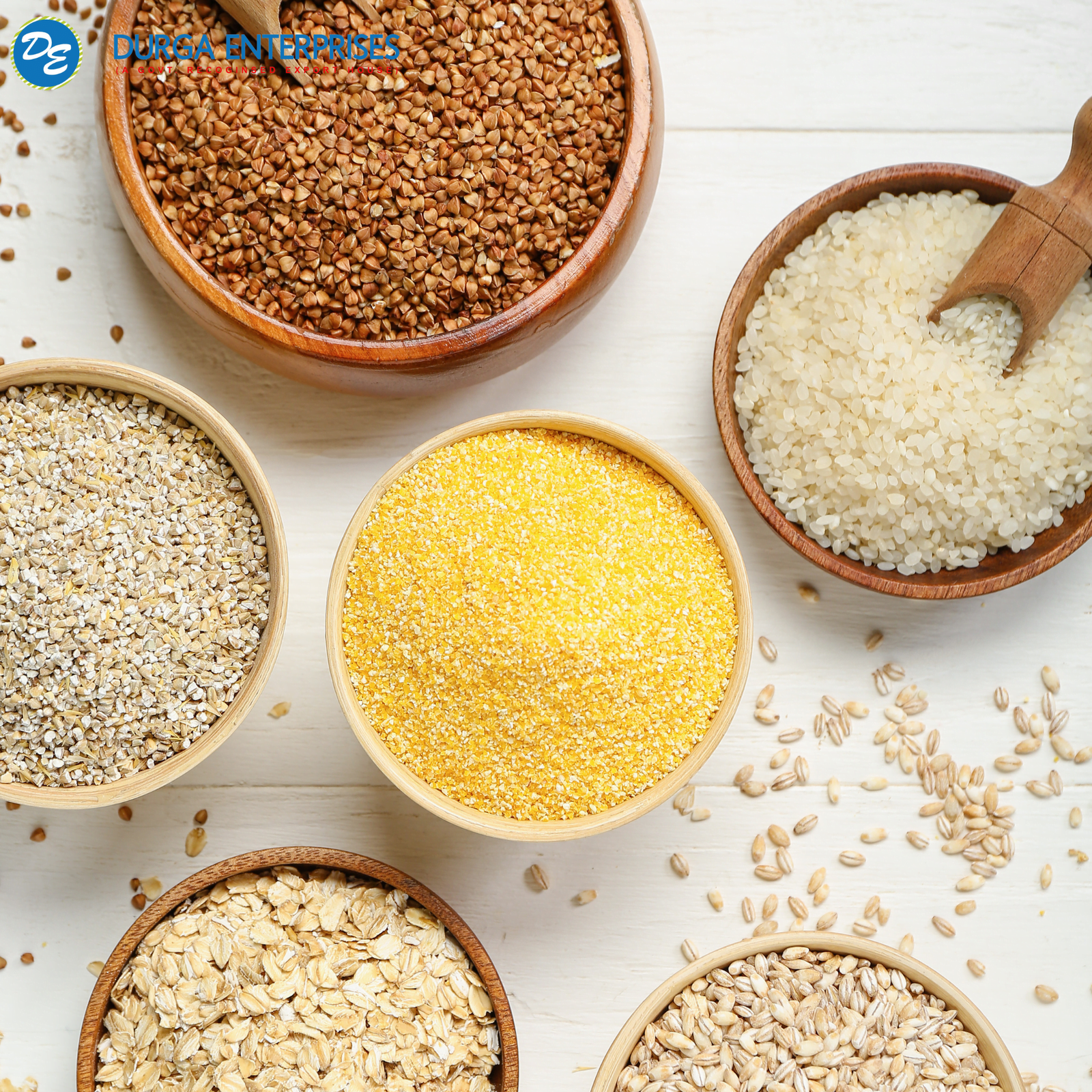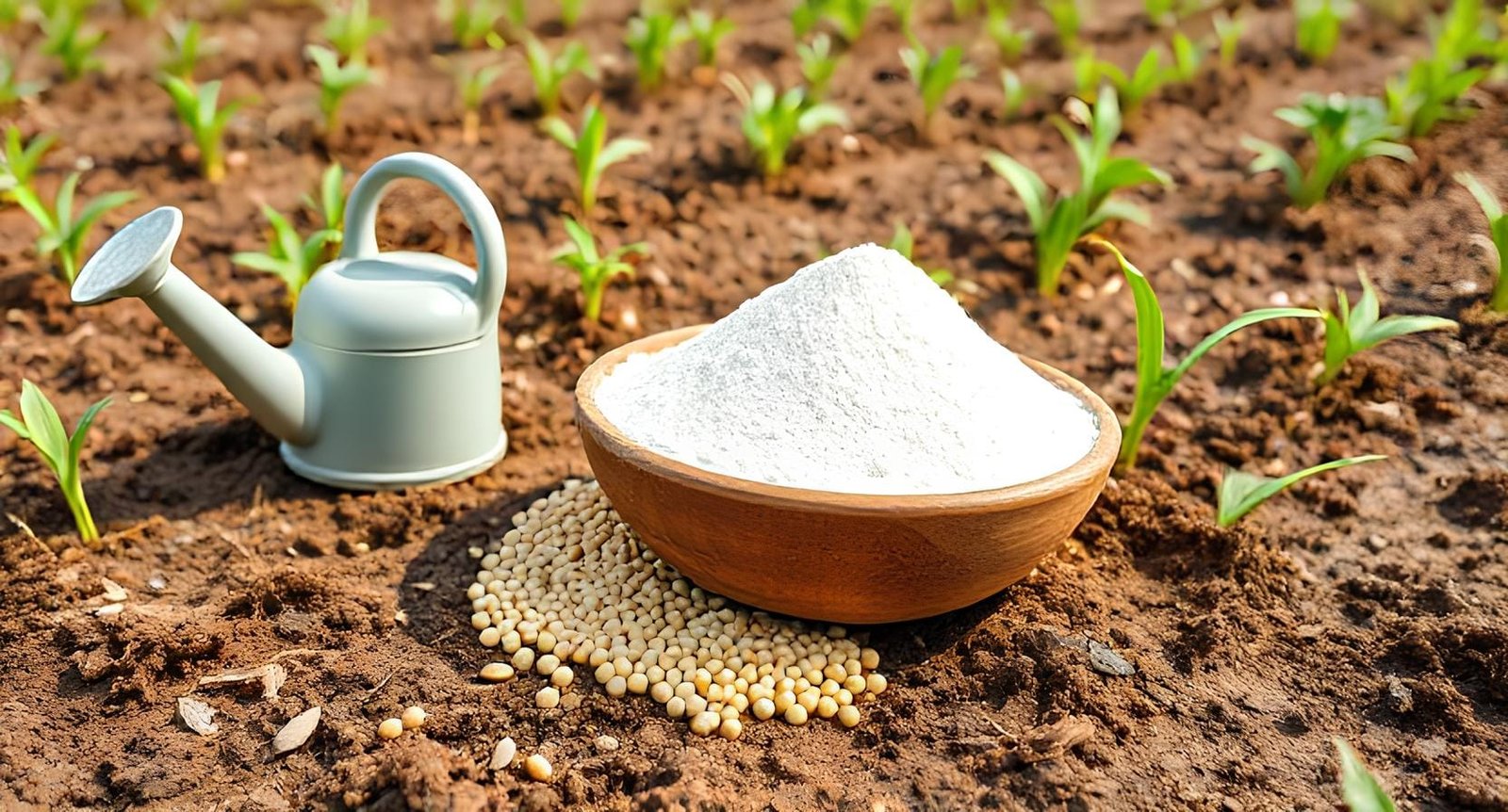
Millets are a diverse group of small, round, cereal grains grown primarily in Africa and Asia. It is a versatile and nutritious grain that has been consumed for thousands of years.
What they are:
- A group of grasses (tribe Paniceae) with edible seeds called grains.
- Some common millet varieties include finger millet, foxtail millet, pearl millet, proso millet, and little millet.
- Generally gluten-free, making them a suitable alternative for people with celiac disease or gluten sensitivity.
Types of Milets:
Here are some common types of millet:
- Pearl Millet: Also known as Bajra, pearl millet is a widely cultivated type of millet, especially in arid and semi-arid regions. It is known for its high tolerance to drought and heat, making it an essential crop in regions with challenging growing conditions.
- Foxtail Millet: This type of millet is common in East Asia and is known for its rapid growth and high nutritional value. It is widely used in various culinary applications, including the production of rice substitutes, porridges, and fermented foods.
- Proso Millet: Proso millet, also called common millet or broomcorn millet, is popular in parts of Russia, the United States, and other regions. It is valued for its short growing season and high protein content, making it a valuable dietary ingredient.
- Finger Millet: Also known as ragi, finger millet is a highly nutritious variety packed with essential nutrients like calcium, iron, and fiber. It is commonly consumed in Southern India and Africa, where it is used to make porridges, flatbreads, and other traditional dishes.
- Barnyard Millet: This type of millet is native to India and is known for its rapid growth and short maturity time. It is a gluten-free grain and is often used in the preparation of rice, porridges, and fermented foods.

Nutritional Powerhouses:
Millets are often referred to as “nutri-cereals” and are rich in essential nutrients. Following are the specifications of each of type of millet:
| Sr. No. | Specification (per 100g) | Foxtail Millet | Pearl Millet (Bajra) | Sorghum (Jowar) | Finger Millet (Ragi) | Little Millet |
|---|---|---|---|---|---|---|
| 1 | Calories | 349 kcal | 378 kcal | 329 kcal | 336 kcal | 207 kcal |
| 2 | Protein | 11.2g | 10.6g | 9.7g | 7.3g | 7.7g |
| 3 | Fat | 4.3g | 5.6g | 3.3g | 1.3g | 1.5g |
| 4 | Carbohydrates | 73.4g | 73.9g | 72.1g | 72.9g | 38.7g |
| 5 | Fiber | 6.7g | 8.5g | 6.7g | 3.6g | 7.6g |
| 6 | Calcium | 31mg | 42mg | 28mg | 344mg | 17mg |
| 7 | Iron | 2.8mg | 16.9mg | 3.9mg | 3.9mg | 9.3mg |
| 8 | Magnesium | 37mg | 76mg | 165mg | 114mg | 76mg |
| 9 | Phosphorus | 296mg | 285mg | 287mg | 298mg | 271mg |
| 10 | Potassium | 195mg | 280mg | 363mg | 408mg | 119mg |
| 11 | Zinc | 1.9mg | 1.7mg | 2.7mg | 2.7mg | 1.6mg |
| 12 | Vitamin B1 (Thiamine) | 0.4mg | 0.4mg | 0.4mg | 0.1mg | 0.2mg |
| 13 | Vitamin B2 (Riboflavin) | 0.1mg | 0.3mg | 0.1mg | 0.1mg | 0.1mg |
| 14 | Vitamin B3 (Niacin) | 2.8mg | 4.9mg | 2.9mg | 1.6mg | 1.3mg |
| 15 | Vitamin B6 | 0.1mg | 0.4mg | 0.2mg | 0.3mg | 0.1mg |
| 16 | Folate | 44mcg | 30mcg | 25mcg | 39mcg | 24mcg |
Benefits:
- Nutritious: Rich in protein, fiber, vitamins, and minerals like iron and magnesium.
- Highly digestible: Easier to digest than some other grains due to their smaller size and lower gluten content.
- Drought-resistant: Can battle through harsh environments with limited water resources.
- Sustainable: Require less water and fertilizer than other grains, making them a more eco-friendly option.
- Versatile: Can be used in various dishes, from porridges and breads to pancakes and stews.
How to Incorporate Millets into Your Diet:
Now that you’re convinced of the numerous benefits of millets, you might be wondering how to introduce them into your daily meals. Here are some simple tips:
Start Gradually: Begin by replacing a portion of rice or wheat with millets in your meals to ease into their unique flavors and textures.
Experiment with Recipes: Millets can be used in a variety of recipes, from breakfast to dinner. Try millet porridge, dosas, salads, and pilafs to discover your favorite preparations.
Mix and Match: Combine different millet varieties to create a blend of flavors and enhance the nutritional diversity of your meals.
Explore Millet Flour: Millet flours, such as sorghum or finger millet flour, can be used to make gluten-free baked goods like bread, pancakes, and cookies.
In a world of full of processed foods and temporary trends, Durga Enterprises’ high-quality millets bring back the power of grains. We aren’t just offering grains; we’re inviting you to level up your health with exciting flavors, where taste meets nutrition, and sustainability becomes a delicious choice!
Nourish your body, naturally: Choose millets!

